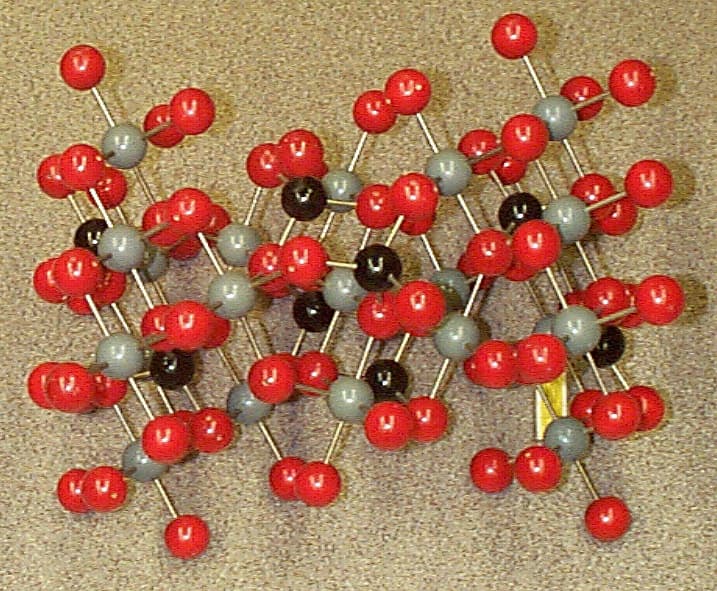Understanding Gemological Formulas
Gemological formulas identify the chemical composition of gems and minerals. Learn what the symbols, numbers, and parentheses mean.
1 Minute Read
Substitutions in Gemological Formulas
Many gemological formulas contain elements grouped in parentheses with commas, for example (Fe, Mg). This indicates that either iron (Fe) or magnesium (Mg), or both, may occupy a specific position in the crystal structure. The element listed first within a parenthesis is the one present in a greater amount on the structural site. In some cases this determines the species!
For example, amblygonite is (Li, Na) Al (PO4) (F, OH).
Interested in this topic?
This article is also a part of our Professional Gemologist Certification Course, in the unit An Introduction to Gemology.
However, if the formula reads (Li, Na) Al (PO4) (OH, F), we have a new species, montebrasite, in which hydroxyl (OH) exceeds fluorine (F).
Furthermore, if the formula is (Na, Li) Al (PO4) (OH, F), then sodium (Na) exceeds lithium (Li). Thus, we class the mineral as yet another species, natromontebrasite.* Obviously, the degree of complexity associated with solid solutions can be very great. Any substitution of elements on a crystallographic structural site may (or may not) have an effect on physical properties.
Impurities
Impurities can also affect properties. A good example is beryl, Be3Al2Si6O18. Beryl often contains elements such as iron (Fe), manganese (Mn), chromium (Cr), vanadium (V), and cesium (Cs). Since these elements are usually present in such small quantities, they're not written into the gemological formula. However, there are exceptions. For example, when Cr is present in a beryl sample (giving it the rich green color we know as emerald), gemologists know to substitute Cr for aluminum (Al) in the formula.
A detailed knowledge of chemical substitutions and color changes in crystals requires a much greater sophistication in crystal chemical principles than I can expound here.
* Editor's note: As of 2006, the International Mineralogical Association (IMA) no longer considers natromontebrasite a mineral species. It is now considered a mixture of amblygonite, lacroixite, and wardite.
Joel E. Arem, Ph.D., FGA
Dr. Joel E. Arem has more than 60 years of experience in the world of gems and minerals. After obtaining his Ph.D. in Mineralogy from Harvard University, he has published numerous books that are still among the most widely used references and guidebooks on crystals, gems and minerals in the world.
Co-founder and President of numerous organizations, Dr. Arem has enjoyed a lifelong career in mineralogy and gemology. He has been a Smithsonian scientist and Curator, a consultant to many well-known companies and institutions, and a prolific author and speaker. Although his main activities have been as a gem cutter and dealer, his focus has always been education.
Related Articles
Sphalerite Appraisal
What is Gemstone Dispersion?
What is Gemstone Transparency?
What are Allochromatic and Idiochromatic Gems?
Never Stop Learning
When you join the IGS community, you get trusted diamond & gemstone information when you need it.
Get Gemology Insights
Get started with the International Gem Society’s free guide to gemstone identification. Join our weekly newsletter & get a free copy of the Gem ID Checklist!
